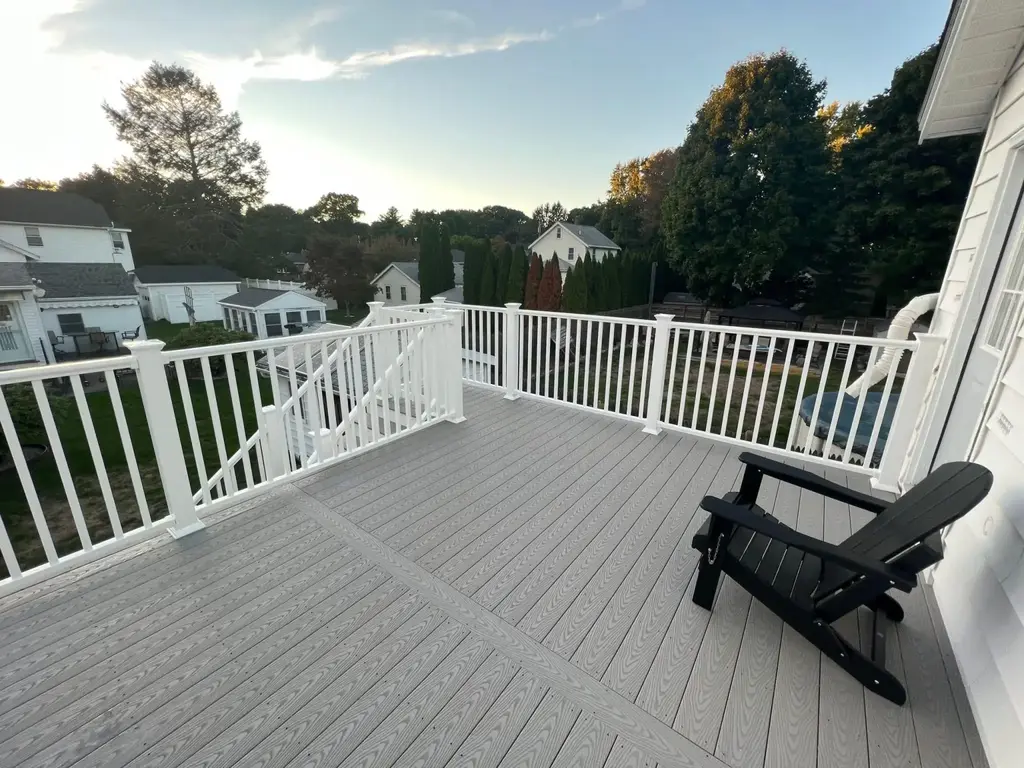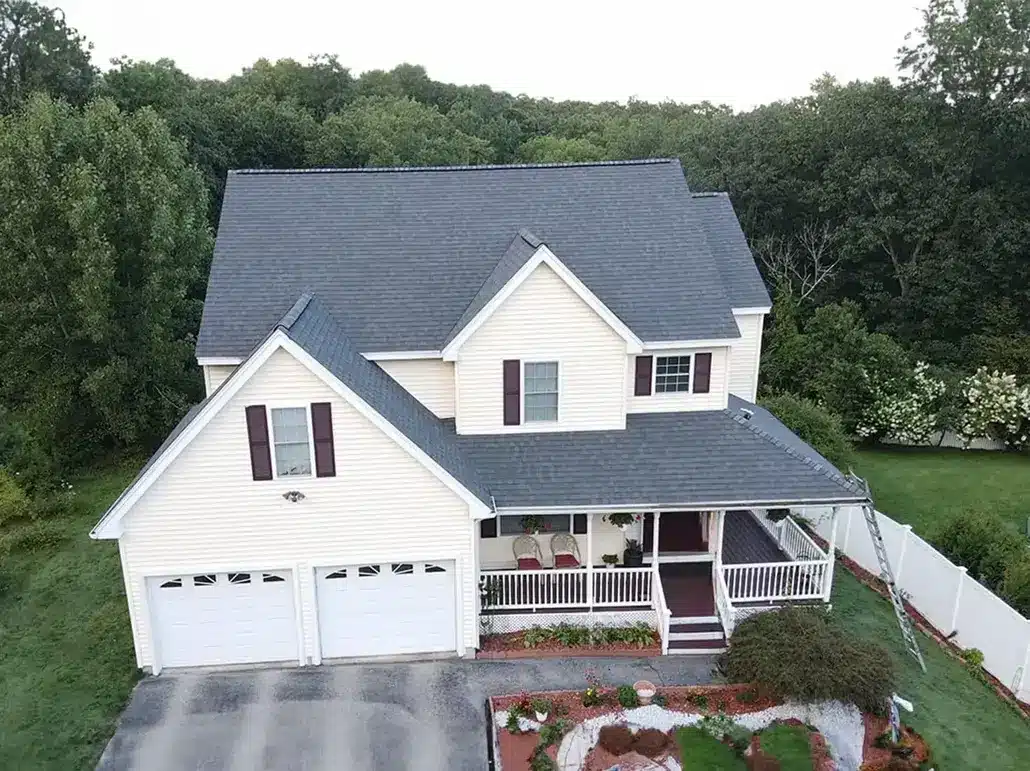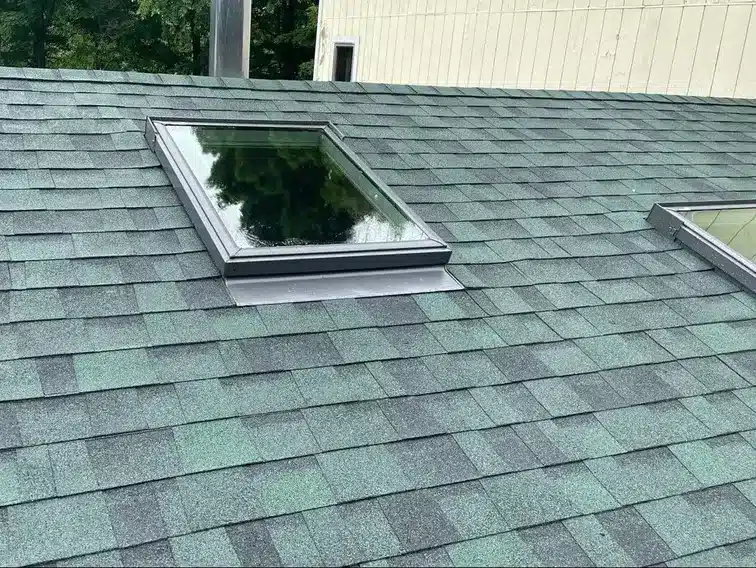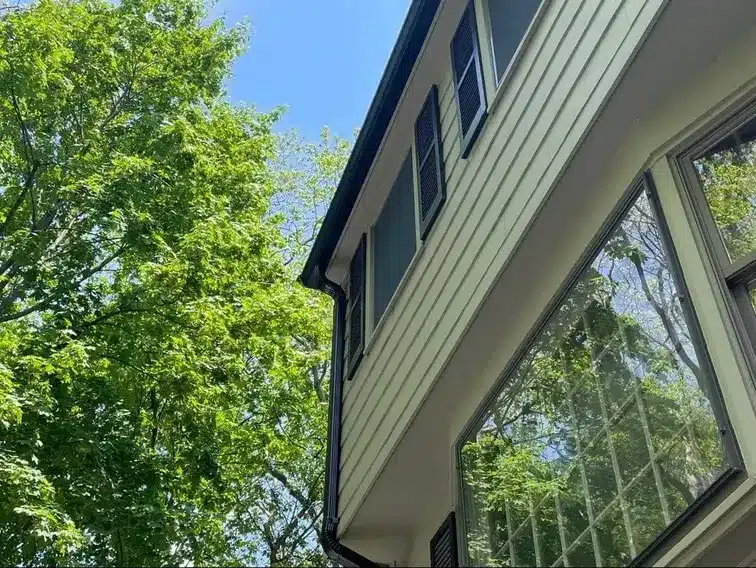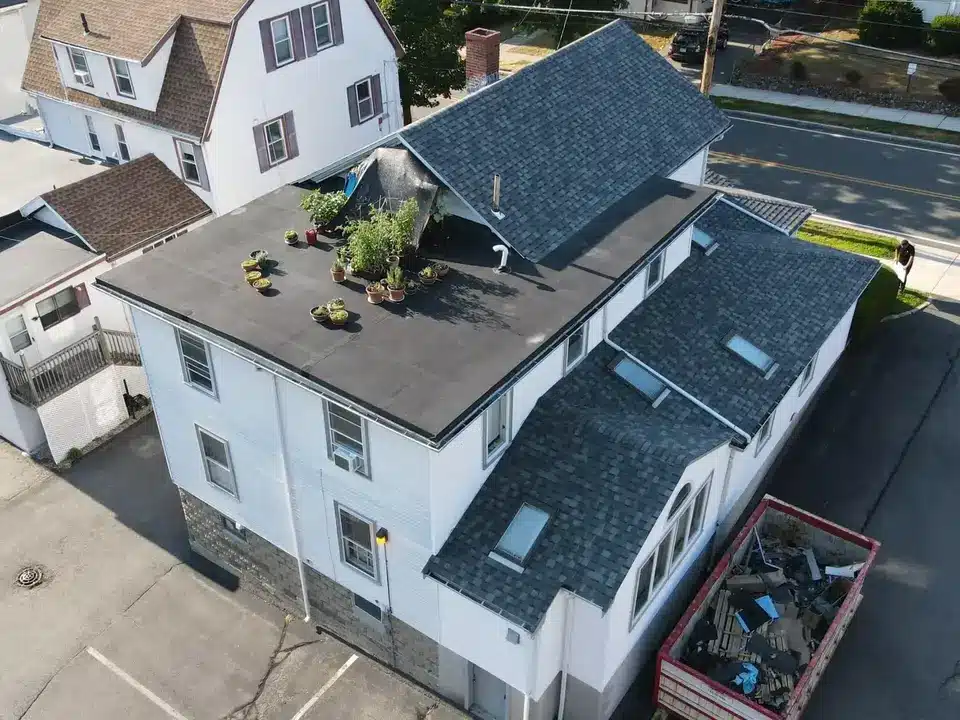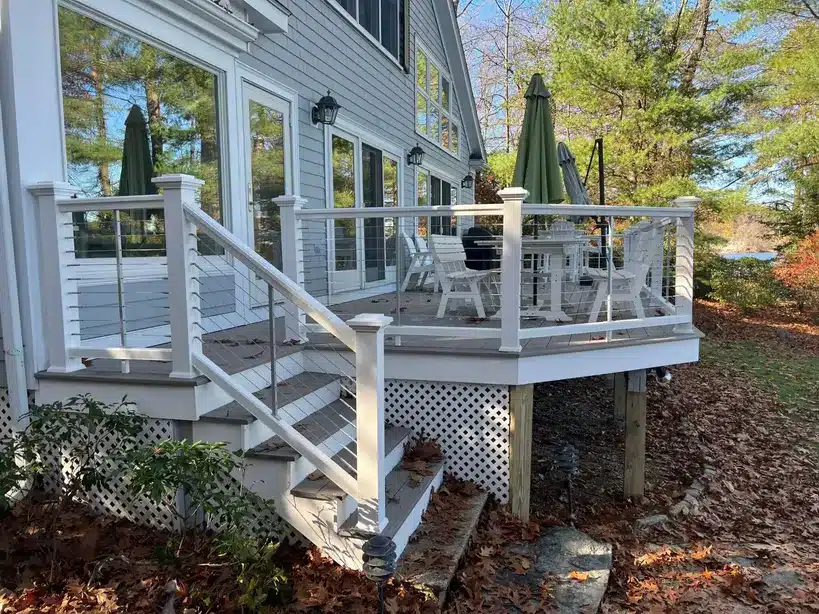
- 5.0 from 90+ reviews
Skylight Replacement
in Boston, MA
Upgrade your home with our expert skylight replacement in Boston, MA. Choose from energy-efficient, weather-resistant skylight options for improved lighting and ventilation.
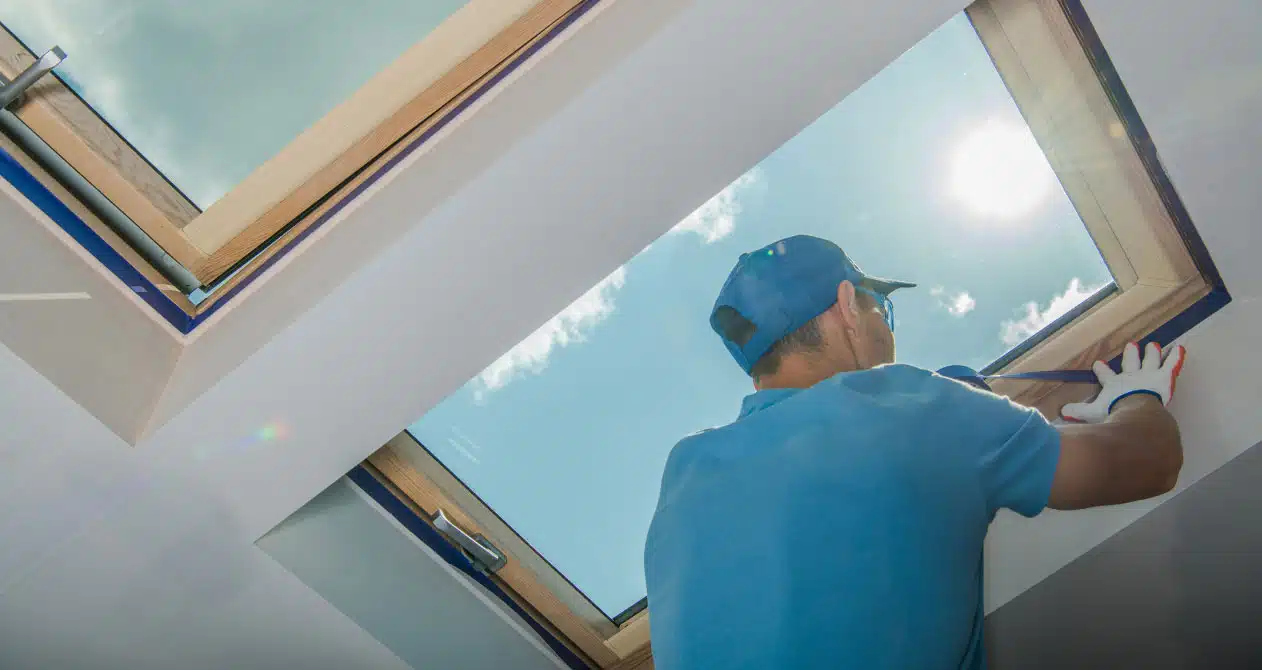






FEATURES
Why Choose CAN Roof Construction
for Skylight Replacement in Boston?
A skylight can transform your home with natural light, improved ventilation, and an open, airy feel. However, when skylights become damaged, outdated, or inefficient, they can lead to leaks, heat loss, and structural concerns. At CAN Roof Construction, we specialize in professional skylight replacement in Boston, MA, ensuring your home stays bright, energy-efficient, and fully protected against the elements.
When Should You Replace Your Skylight?
Skylights are built to last, but over time, they can develop structural and functional issues. While skylight repairs can sometimes help, skylight replacement may be necessary for long-term efficiency and protection. Consider replacing your skylight if you notice:
- Frequent leaks indicate a compromised seal, causing stains, mold, and interior damage.
- Failing glass seals trap condensation, reducing visibility and efficiency.
- Hail or debris damage weakens skylight structure and weather resistance.
- Older skylights lack insulation and UV protection, raising energy costs.
- New skylight technology enhances durability, insulation, and comfort year-round.
If your skylight is more than 15-20 years old or showing signs of wear, replacing it with a modern, energy-efficient option can improve comfort, aesthetics, and home value.
Skylight Replacement Options in Boston
At CAN Roof Construction, we install top-quality skylights from trusted brands like Velux, Fakro, and Wasco, ensuring maximum durability, energy savings, and weather resistance.
- Fixed Skylights. Designed for maximum natural light with airtight sealing to prevent leaks.
- Vented Skylights. Available in manual, electric, and solar-powered options for improved airflow and indoor comfort.
- Tubular Skylights. Perfect for hallways, closets, and small spaces, these compact skylights provide energy-efficient daylighting.
Each skylight replacement is custom-sized and expertly installed to eliminate leaks, improve energy efficiency, and enhance your home’s interior atmosphere.
Leak-Proof Installation with Advanced Waterproofing
Skylight replacement requires precise installation to prevent future leaks, condensation, and air infiltration. Our certified professionals ensure:
- Reinforced Flashing & Sealing
- Insulated, UV-Protected Glass
- Proper Ventilation & Condensation Control
With our precision installation techniques and premium materials, your new skylight will remain leak-free and energy-efficient for decades.
Boost Energy Efficiency & Home Value with a Skylight Upgrade
A new skylight is more than just an aesthetic upgrade – it reduces energy costs and enhances home value.
- Better Insulation. Newer skylights reduce heat loss in winter and prevent overheating in summer, lowering utility bills.
- Improved Airflow. Vented skylights help remove excess humidity and improve indoor air quality.
- Increased Home Value. Modern skylights boost curb appeal and resale value, making them a smart investment.
Just like roof installation, skylight replacement requires the same level of dedication and expertise. By upgrading to an energy-efficient skylight, you’ll enjoy lower energy costs, improved comfort, and long-term durability.
Seamless Skylight Replacement Process
Replacing a skylight doesn’t have to be a stressful process. At CAN Roof Construction, we make it simple and hassle-free:
- Custom-Fit Solutions – Every skylight is precisely measured to match your home’s architecture.
- Fast & Efficient Installation – Most skylight replacements are completed in a single day.
- No Hidden Costs – Our upfront pricing ensures transparency, with no last-minute surprises.
We work quickly and efficiently, ensuring a smooth installation with minimal disruption to your home.
Upgrade Your Home with a Leak-Free Skylight Today!
If your skylight is damaged, outdated, or inefficient, replacing it can improve energy efficiency, enhance aesthetics, and prevent costly leaks. At CAN Roof Construction, we provide expert skylight replacement in Boston, MA, backed by industry-leading warranties and superior craftsmanship.
Projects
Showcasing Our Work in Every Detail
Step into the world of CAN Roof Construction and discover a gallery of our finest roofing projects in c. From sturdy roofs to elegant decks, skylight installations to efficient gutter systems, we’ve got it all covered. Browse all our projects now to see how we can transform your home!
reliable
Your Trusted Choice for Skylight Replacement
Old and damaged skylights can cause leaks, energy loss, and structural issues. At CAN Roof Construction, we offer expert skylight replacement in Boston, MA, providing modern, energy-efficient, and weatherproof solutions to enhance natural lighting and ventilation while improving your home’s efficiency.
Custom Designs
Available in fixed, vented, tubular, and custom-shaped skylights for tailored aesthetics and functionality.
Leak-Proof
Advanced flashing and waterproofing techniques ensure long-lasting, leak-free performance.
Energy-Efficient
Low-E coatings, insulated glazing, and UV protection improve energy efficiency and comfort.
Expert Install
Expertly installed to meet industry standards, ensuring durability and superior performance.
Let's Fix That Your Skylight!
FAQ
Find Answers to Your
Skylight Replacement Questions
Replacing old skylights enhances energy efficiency, reduces drafts, and improves natural lighting. Modern skylights often come with advanced glazing technologies, UV coatings, and better insulation, contributing to lower energy bills and increased comfort inside your home.
Whether you’re opting for skylight installation or replacement, our expert team ensures a seamless, high-quality solution that maximizes both performance and aesthetic appeal.
The duration of skylight replacement depends on factors such as the number of skylights, their size, and any additional modifications needed. Generally, a straightforward replacement can be completed within a day or two. Professional skylight technicians works efficiently to minimize disruptions and ensure a swift and successful replacement process.
Skylight repair services can address various issues, including leaks, broken seals, damaged frames, and issues with the motorized components. Our team can assess the specific problem and recommend appropriate repairs to restore the functionality and efficiency of your skylight.
Signs of a skylight in need of replacement include visible water leaks, condensation between panes, discoloration, or difficulty in opening and closing. If you notice any of these issues, it’s advisable to schedule a professional inspection to determine the extent of replacements needed.

